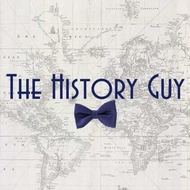
Join The History Guy from YouTube in conversation about his videos and various topics in history. Here you can find behind-the-scenes peeks of the set and The History Cats. Share ideas for future videos or ask questions of both the community and The History Guy himself. Early releases and the occasional extras are available for supporting members.
The Legend of Sleepy Hollow, by Washington Irving, has been called “America’s First Ghost story." It is, perhaps, the story that most represents the Halloween season. But it also works in a lot of history, history that deserves to be remembered.
The plot of the Rue of Saint Nicaise and its use of an infernal machine played a vital role in the career of Napoleon Bonaparte, and transformed the very concept of assassination, resulting in a new definition of a word all too familiar today: terrorist.
Stories of the suffering, and attempts to celebrate Christmas among soldiers at the front during war, including the 1914 “Christmas truce,” remind us of the blessings of Christmas even in the worst of times. But one Christmas stands out for sheer desperation.
On December 19, 1944 the submarine USS Redfish accomplished a rare feat in the second world war, sinking a Japanese fleet aircraft carrier. It was just one event in the service of a submarine that entered the second world war rather late in the game, but found distinguished service during the second world war and beyond. In fact, there is a good chance you’ve seen USS Redfish, even if you didn’t know it at the time.












